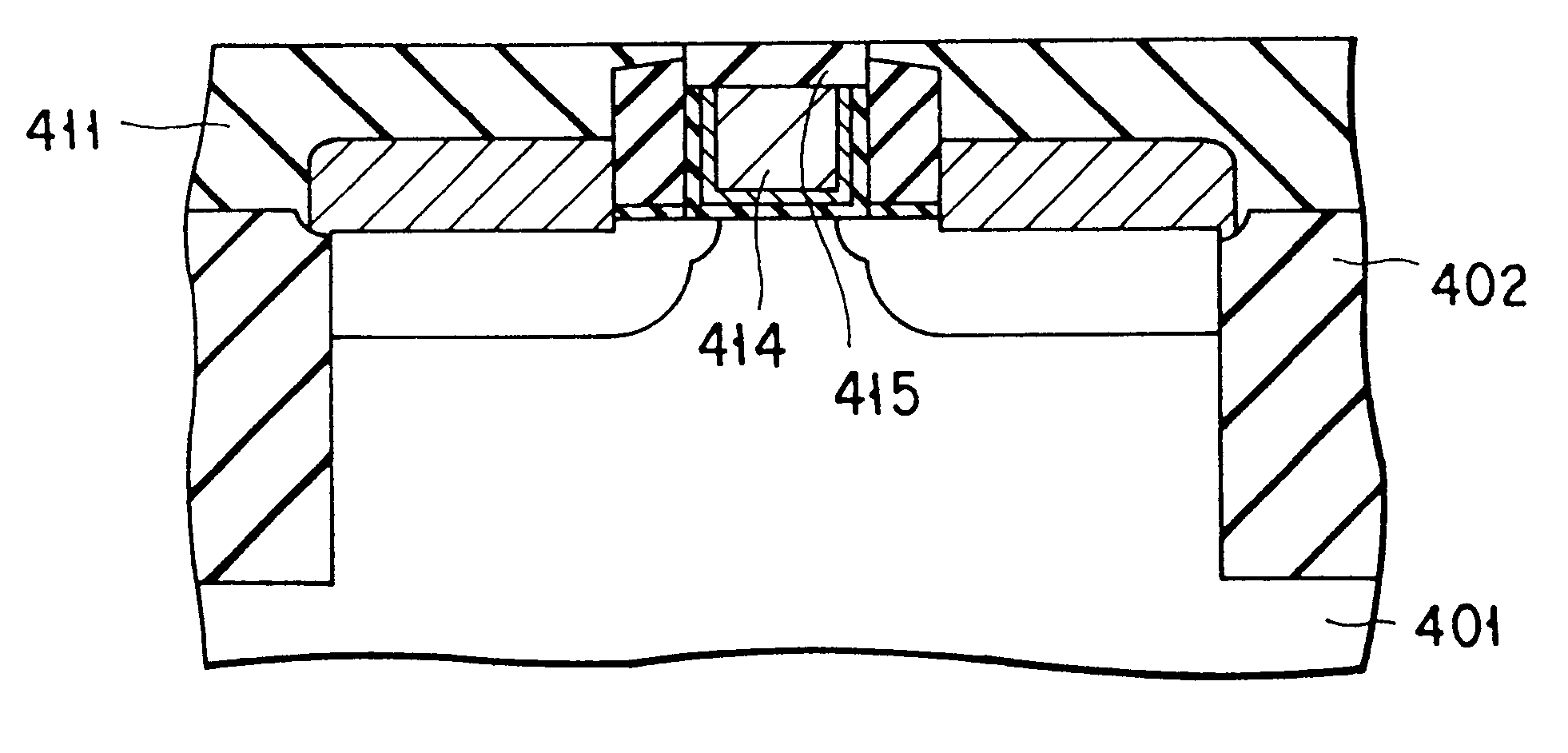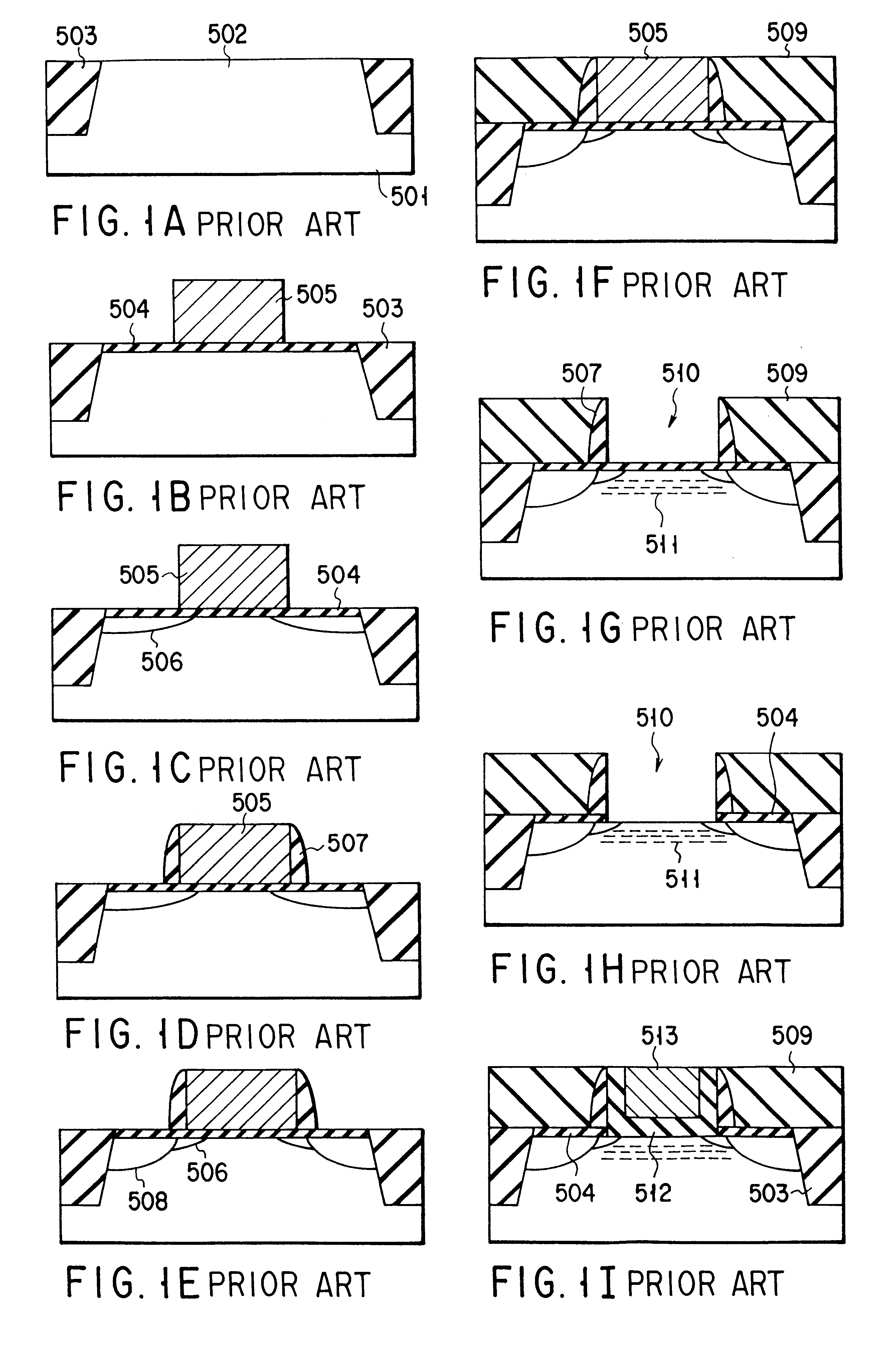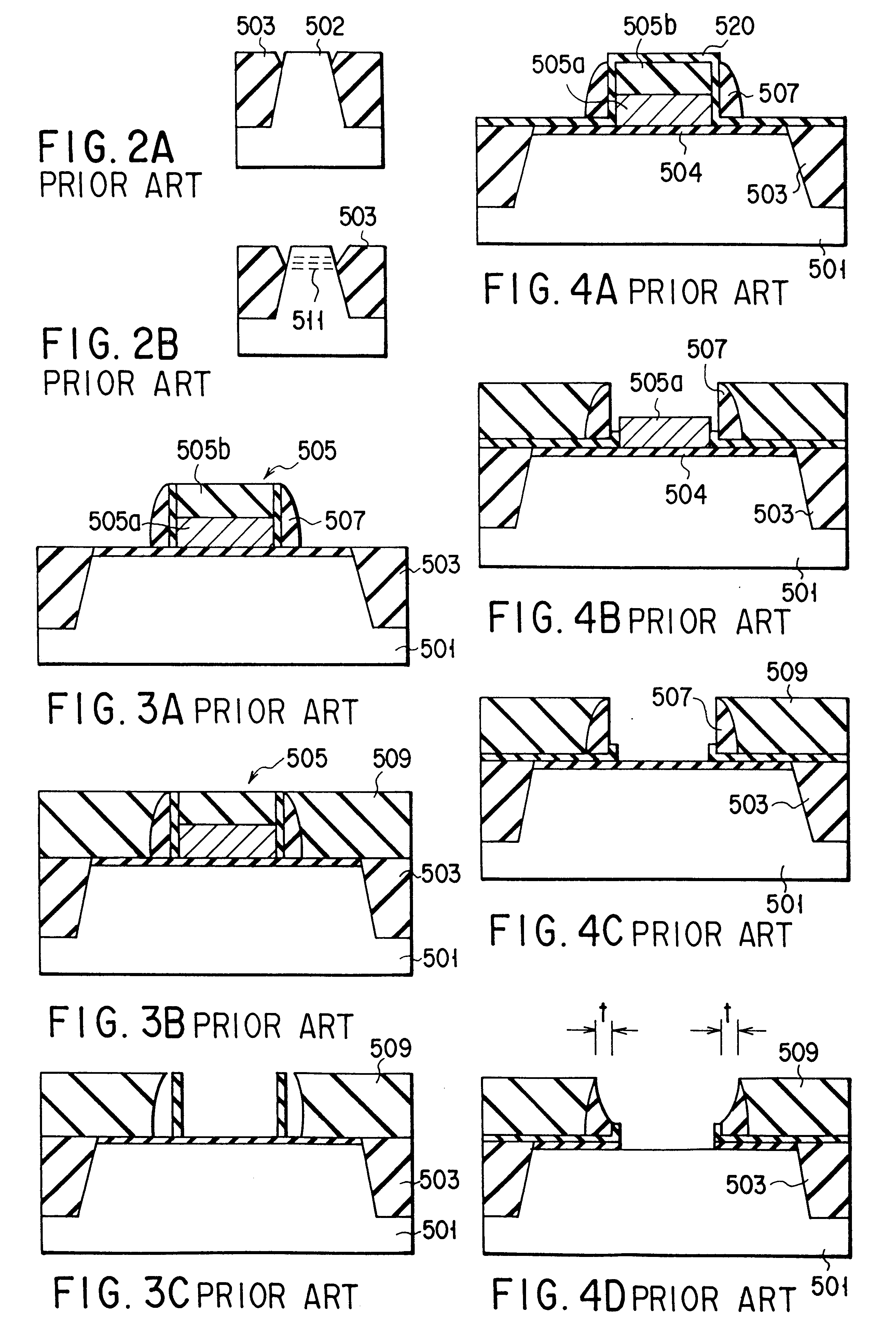Semiconductor device and manufacturing method therefor
- Summary
- Abstract
- Description
- Claims
- Application Information
AI Technical Summary
Benefits of technology
Problems solved by technology
Method used
Image
Examples
first embodiment
FIGS. 9A through 9I and FIGS. 10A through 10I are cross-sectional views showing a manufacturing process for a semiconductor device according to the first embodiment of the invention. FIGS. 9A-9I illustrate the cross-section of a transistor in a gate length direction, and FIGS. 10A-10I illustrate the cross-section of the transistor in a gate width direction.
First, an SiO.sub.2 film 102 about 10 nm thick is formed on the surface of an Si substrate 101 by thermal oxidization or the like. Then, an amorphous Si film 103 and Si.sub.3 N.sub.4 film 104 about 200 nm and 100 nm thick, respectively, are deposited on the SiO.sub.2 film 102 by LPCVD. The amorphous Si film 103 may contain a donor such as phosphorus or arsenic (FIGS. 9A and 10A).
Next, the SiO.sub.2 film, amorphous Si film 103 and Si.sub.3 N.sub.4 film 104 are processed into an island-like pattern by, for example, lithography or RIE (FIGS. 9B and 10B).
Then, the Si substrate 101 is etched by RIE, self-aligned with the previously for...
second embodiment
A first example of the second embodiment will now be described with reference to FIGS. 11A through 11H, 12 and 13. FIGS. 11A-11H are cross-sectional views in the gate length direction (the cross section along line 11--11 in FIG. 13), showing a manufacturing process for a semiconductor device according to this specific example. FIG. 12 is a cross-sectional view in the gate width direction (the cross section along the line 12--12 in FIG. 13) and corresponds to FIG. 11H.
First, an amorphous silicon film 203, which will be a dummy gate pattern, is deposited 100 nm thick on a buffer oxide film 202, which has been formed on a silicon substrate 201 (FIG. 11A).
Next, a resist pattern (not shown) for forming a device region is formed. With the resist pattern used as a mask, the amorphous silicon film 203, buffer oxide film 202 and silicon substrate 201 are etched by RIE, forming lands 204 to be device regions and making a groove 205 to be an isolation region (FIG. 11B).
Next, a buried insulator...
third embodiment
A first example of the third embodiment will now be described with reference to FIGS. 25A through 25H, 26 and 27. FIGS. 25A-25H are cross-sectional views in the gate length direction (the cross section along the line 25--25 in FIG. 27), showing a manufacturing process for a semiconductor device according to this specific example. FIG. 26 is a cross-sectional view in the gate width direction (the cross section along the line 26--26 in FIG. 27) and corresponds to FIG. 25H.
First, a silicon film 303 of polycrystalline silicon or amorphous silicon, which contains an impurity and which is to be part of a gate line, is deposited 100 nm thick on a gate insulator film 302 formed on a silicon substrate 301. Note that an impurity is implanted into-the substrate, as needed, to control the substrate concentration, before the deposition of the gate electrode (FIG. 25A).
Next, a resist pattern (not shown) for forming a device region is formed. With the resist pattern used as a mask, the silicon fil...
PUM
 Login to View More
Login to View More Abstract
Description
Claims
Application Information
 Login to View More
Login to View More - R&D
- Intellectual Property
- Life Sciences
- Materials
- Tech Scout
- Unparalleled Data Quality
- Higher Quality Content
- 60% Fewer Hallucinations
Browse by: Latest US Patents, China's latest patents, Technical Efficacy Thesaurus, Application Domain, Technology Topic, Popular Technical Reports.
© 2025 PatSnap. All rights reserved.Legal|Privacy policy|Modern Slavery Act Transparency Statement|Sitemap|About US| Contact US: help@patsnap.com



